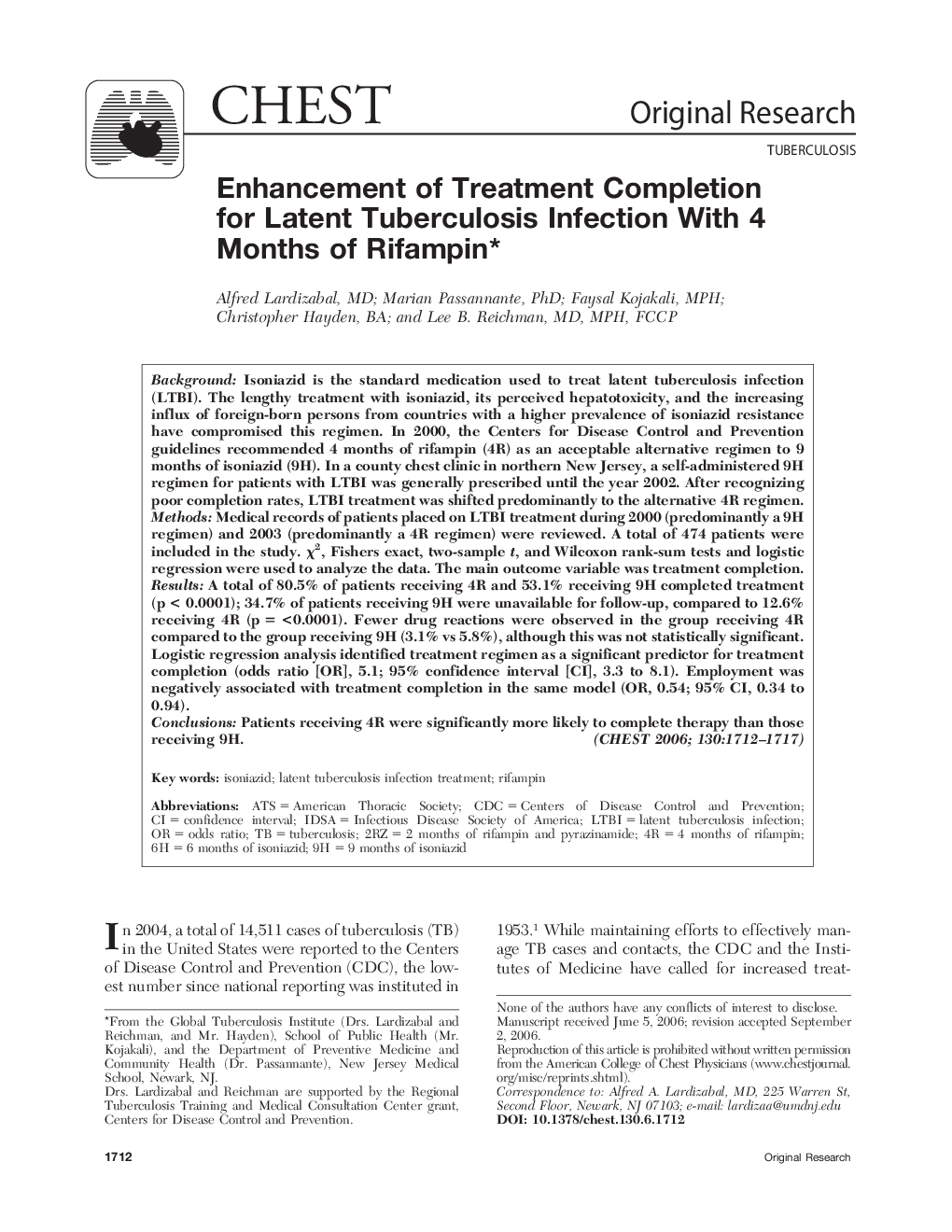| کد مقاله | کد نشریه | سال انتشار | مقاله انگلیسی | نسخه تمام متن |
|---|---|---|---|---|
| 2905701 | 1574868 | 2006 | 6 صفحه PDF | دانلود رایگان |

BackgroundIsoniazid is the standard medication used to treat latent tuberculosis infection (LTBI). The lengthy treatment with isoniazid, its perceived hepatotoxicity, and the increasing influx of foreign-born persons from countries with a higher prevalence of isoniazid resistance have compromised this regimen. In 2000, the Centers for Disease Control and Prevention guidelines recommended 4 months of rifampin (4R) as an acceptable alternative regimen to 9 months of isoniazid (9H). In a county chest clinic in northern New Jersey, a self-administered 9H regimen for patients with LTBI was generally prescribed until the year 2002. After recognizing poor completion rates, LTBI treatment was shifted predominantly to the alternative 4R regimen.MethodsMedical records of patients placed on LTBI treatment during 2000 (predominantly a 9H regimen) and 2003 (predominantly a 4R regimen) were reviewed. A total of 474 patients were included in the study. χ2, Fishers exact, two-sample t, and Wilcoxon rank-sum tests and logistic regression were used to analyze the data. The main outcome variable was treatment completion.ResultsA total of 80.5% of patients receiving 4R and 53.1% receiving 9H completed treatment (p < 0.0001); 34.7% of patients receiving 9H were unavailable for follow-up, compared to 12.6% receiving 4R (p = <0.0001). Fewer drug reactions were observed in the group receiving 4R compared to the group receiving 9H (3.1% vs 5.8%), although this was not statistically significant. Logistic regression analysis identified treatment regimen as a significant predictor for treatment completion (odds ratio [OR], 5.1; 95% confidence interval [CI], 3.3 to 8.1). Employment was negatively associated with treatment completion in the same model (OR, 0.54; 95% CI, 0.34 to 0.94).ConclusionsPatients receiving 4R were significantly more likely to complete therapy than those receiving 9H.
Journal: Chest - Volume 130, Issue 6, December 2006, Pages 1712–1717